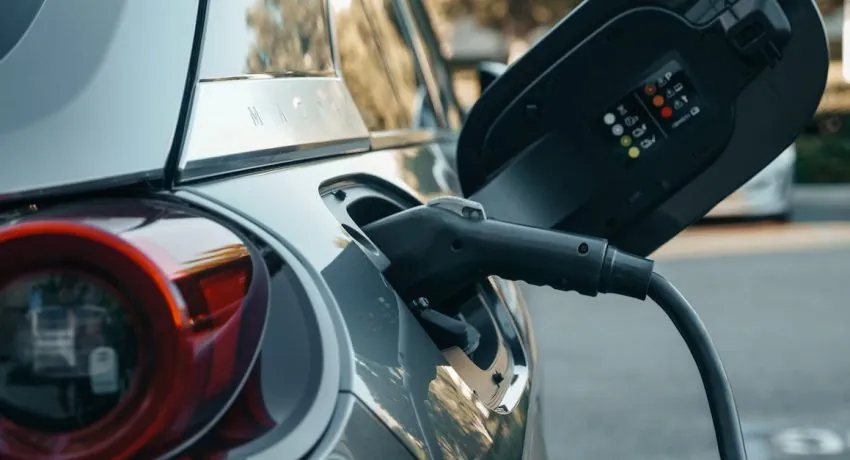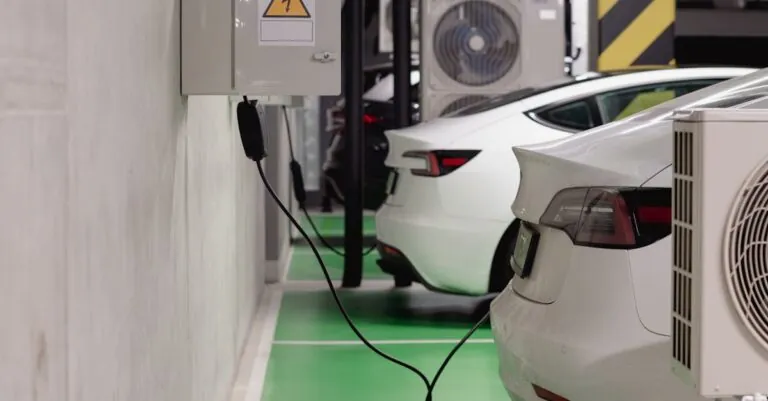Imagine gliding into your driveway and letting your electric vehicle charge itself while you kick back with a cup of coffee. Wireless EV charging promises just that—a hassle-free way to power up without the tangled mess of cords. But before you jump on this futuristic bandwagon, it’s essential to weigh the pros and cons.
On one hand, the convenience and sleek design could make your life easier, but on the other, some drawbacks might leave you scratching your head. Is it really worth the investment, or will it just leave your wallet feeling a little lighter? Dive into the electrifying world of wireless EV charging and discover if it’s the game-changer you’ve been waiting for or just another shiny gadget in the tech world.
Table of Contents
ToggleOverview of Wireless EV Charging
Wireless electric vehicle charging employs inductive charging technology, allowing EVs to recharge without plugging in. This method uses electromagnetic fields to transfer energy between a charging pad on the ground and a receiver on the vehicle. Convenience ranks among its biggest advantages, eliminating the need for physical connectors.
Many find the sleek and minimalistic design appealing, enhancing aesthetic preferences. Charging stations can integrate seamlessly into public infrastructure, appearing in parking lots or ride-sharing hubs. Speed of charging varies significantly, influenced by the system’s efficiency and vehicle compatibility.
Cost factors prominently in the wireless charging discussion. Initial installation may involve higher expenses compared to traditional charging stations. Return on investment often comes down to user habits and vehicle compatibility with the system. Maintenance costs also warrant consideration, as less moving parts may lead to fewer repairs.
Safety considerations include potential electromagnetic exposure, with standards in place to keep emissions within safe limits. Studies indicate that wireless charging systems operate safely under regulated guidelines.
Wireless EV charging has generated interest from various stakeholders, including manufacturers and urban planners. Emerging trends suggest a growing market, with more partnerships forming to develop infrastructure. As the technology evolves, its impact on everyday commuting and transportation infrastructure becomes more evident.
Adopting wireless charging may reshape how people interact with their vehicles, prioritizing charging convenience in daily life.
Pros of Wireless EV Charging
Wireless EV charging offers significant advantages that enhance the overall user experience and vehicle interaction.
Convenience and Ease of Use
Convenience stands out as a key benefit of wireless EV charging. Users enjoy the simplicity of driving into a charging station without the hassle of plugging in cables. Inductive charging technology allows energy transfer through electromagnetic fields, providing seamless charging for electric vehicles. Drivers can simply park over charging pads, eliminating potential hassles associated with traditional connectors. Reduced charging time and ease of access boost user satisfaction and make electric vehicle ownership more attractive.
Reducing Cable Wear and Tear
Reducing cable wear and tear is another notable advantage. Traditional charging cables experience wear over time, leading to potential malfunctions and replacement needs. Wireless charging eliminates the wear associated with physical connectors, ensuring a longer lifespan for charging equipment. With fewer components to maintain, users save on costs related to replacement cables and repairs. This technology promotes reliability and maintains optimal charging performance consistently, enhancing user confidence in electric vehicle technology.
Enhanced Safety Features
Enhanced safety features contribute to the appeal of wireless EV charging. Safety standards guard against electromagnetic exposure, ensuring compliance with regulatory guidelines. Wireless systems operate under parameters that minimize risks, making them a secure alternative for users. Furthermore, the absence of tangled cables reduces tripping hazards in public spaces, promoting a safer environment for all. This combination of safety and functionality strengthens the case for adopting wireless EV charging in both residential and public settings.
Cons of Wireless EV Charging
While wireless EV charging offers numerous advantages, some drawbacks warrant consideration. Understanding these limitations ensures informed decisions about adopting this technology.
Cost Considerations
Installation expenses for wireless charging systems typically exceed those of traditional chargers. Initial costs for hardware can be significantly higher, making it less accessible for some consumers. Return on investment depends heavily on factors like individual charging habits and vehicle compatibility. Ongoing maintenance costs may be lower due to fewer moving parts, yet the upfront price often deters potential users.
Efficiency and Charging Speed
Charging efficiency with wireless systems may lag behind wired options. Inductive charging technology cannot always match the speed of traditional connections, causing longer wait times to achieve a full battery. Energy loss during transfer can further reduce efficiency, leading to longer periods between vehicle charges.
Infrastructure Limitations
Infrastructure availability poses a challenge for wireless EV charging adoption. Current installations are limited to specific locations, making widespread access difficult. Potential drivers may find it hard to locate compatible charging stations, which can hinder adoption rates. Moreover, urban planners face challenges creating an extensive network of charging pads integrated into existing infrastructure.
Future of Wireless EV Charging
Innovation in wireless EV charging continues to progress, with advancements in technology paving the way for broader adoption. Manufacturers invest in research, enhancing efficiency and functionality, which may attract more consumers. As urban planners align infrastructure with modern charging solutions, public spaces could feature integrated charging pads, turning everyday parking spots into charging zones.
In terms of efficiency, improvements in energy transfer could reduce charging times significantly. Studies indicate that newer inductive systems demonstrate reduced energy loss, addressing previous concerns about inefficiency. Enhanced compatibility with a wide range of EV models can also bolster adoption rates, ensuring drivers find solutions tailored to their vehicles.
Data points towards a gradual shift in consumer behavior, emphasizing a preference for convenience in charging options. If drivers experience the benefits of hassle-free charging without traditional cables, they may favor wireless systems over traditional stations. Cost advantages associated with reduced cable wear and lower maintenance fees present another attractive facet of this technology.
Telematics and smart grid technologies offer potential synergies, allowing vehicles to communicate directly with charging systems. This might optimize charging times further, aligning with energy demand and reducing costs for users. Moreover, regulatory frameworks are evolving to support the deployment of wireless technologies, ensuring safety and efficiency remain a priority.
Environmental considerations play a role too, as wireless charging systems may facilitate the integration of renewable energy sources. When powered by clean energy, charging stations can promote sustainable transportation options. Future advancements show promise, setting a trajectory where wireless EV charging becomes a staple in daily commuting and public transport landscapes.
Wireless EV charging presents a compelling mix of convenience and modern technology that could reshape transportation. Its seamless integration into daily life offers an attractive alternative to traditional charging methods. However the higher costs and potential inefficiencies can’t be overlooked.
As the technology advances and infrastructure develops the balance between convenience and practicality will become clearer. Ongoing innovations may enhance efficiency and compatibility making wireless charging more appealing to consumers.
Ultimately the decision to adopt this technology hinges on individual needs and preferences. As the market evolves staying informed will be key to making the best choice for the future of electric vehicle charging.




